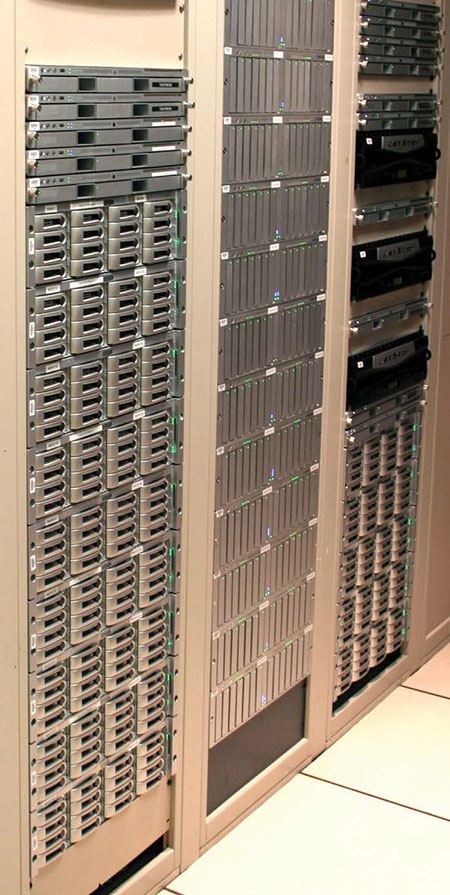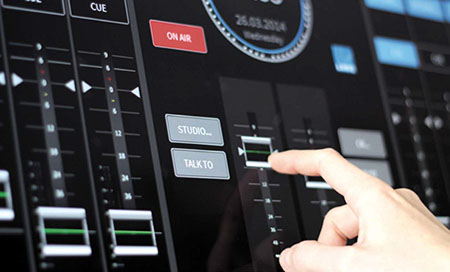The ‘Dematerialization’ of Audio Facilities
Recently I ran across an interesting piece from the Joint Taskforce for New Media (JT-NM) on the “dematerialized facility,” which envisions broadcast facilities built entirely from commodity IT equipment or with everything outsourced and no onsite equipment at all. Prior to the widespread availability of high-speed internet, the prospect of a disembodied broadcast facility would have seemed preposterous, but that is no longer the case and it is a very real possibility that broadcast facilities as we know them now will become relics of the past.
Dematerialization is essentially what happened to the large majority of recording studios and post houses—they no longer exist in the forms they possessed in the past, with recording shifting to home studios and post work being outsourced to freelancers working from personal facilities. It is unlikely that broadcast and cable network master control chains will move to homes, but it is absolutely conceivable that the technical infrastructure and content delivery chains could be outsourced.

Is this the boring future of all broadcast facilities?
A TALE OF TWO STUDIOS
The audio industry is already, to an extent, living in the dematerialized world. The advantages of minimal infrastructure were brought home to me during a just-completed studio move where there were two very different audio studios to uproot and relocate to a different building about a mile away. As usual, the move was done under tight time constraints due to scheduled sessions bookending the move. Fortunately, only one studio needed to be online for the sessions since the other had been relegated as backup in the event the primary studio was down.
To accommodate the booked sessions meant I had around 20 hours to dismantle, move, reassemble, and test at least one studio. The deadline was met and sessions happened as planned, but only because of the design of the studio I chose to bring up first—one that is in line with the vision of a dematerialized facility.
The other, more complicated studio is one a friend and I designed and assembled over 20 years ago. It is equipped the way small broadcast audio studios used to be built—with a standard mixing console, patch bays, audio meters, a limiter/compressor, an amplifier for unpowered main speakers, telephone hybrid, and an ISDN codec. Its original implementation also included reel-to-reel, cassette, and DAT recorders, but these were removed as their technologies were supplanted by hard disk-based systems.
The second, newer studio was built by another engineer, is much simpler, and takes advantage of advances in technology in the two decades since the first was built. At the center of this studio is a computer running recording software, a small USB audio interface, a small audio mixer for signal routing, a high-quality microphone preamp, balance boxes for level matching, powered speakers, and a telephone hybrid. The ISDN codec in this studio has been replaced by Source-Connect Pro, with third party bridging for the rare ISDN session that does occur. Both studios have talkback and headphone distribution to a portable recording booth, and the older studio has custom-built telephone and ISDN control, so session connections can be managed remotely without leaving the booth.
Using the portable recording booth allowed us to set up the recording space in an untreated room without making any physical changes to the room itself. It also meant we could get that space ready before either of the studio control areas were assembled. The simplified design of the newer studio enabled quick equipment placement and setup of the work area. Once the equipment and external lines were connected, all that was required was to check device and software configurations, make test recordings, and check the phone patch and Source-Connect connections in the control room and voice booth.

Live event production will always need some sort of fast user interface for mixing and routing, but it may be some time before mix engineers are willing to give up tactile faders.
ROOM FOR IMPROVEMENT
Once testing was complete, the studio was ready for sessions again—and they started almost immediately, just 10 hours from the time the booth and studios were disassembled for relocation. The older studio did not come together quite as quickly. The physical location of the equipment in this studio in relation to the voice booth and the main studio meant that it was necessary to change the racked placement of some equipment and remake some cables. In fact, the sheer number of cables in the older studio were the primary reason it took almost 16 hours to rewire and test it after reassembly of the racks.
Even though the newer studio was much quicker to reassemble and test, it could be made even simpler. The audio mixer could be replaced with a slightly larger, more capable, audio interface which could also handle record feeds, talkback, phone patch, Source-Connect routing, and headphone feeds. The telephone hybrid could be replaced by a VoIP box or software. With Audio-over-IP interfaces now widely available, duplicate recording rigs could be built easily and relatively inexpensively, and could be tied together and extended far more easily, with far fewer cables than traditional recording studios and even some newer computer based systems.
When we ponder the prospect of dematerialized facilities it is important to remember that that future is one we’re already living in. Computers have been transitioning to virtual machines for years. Portable recording booths and moveable acoustic panels not only mean quicker recording space setup, but also less physical modification of rooms. Using off-the-shelf computers, drives, switches, and other IT-centric components means easy replacement and upgrades, and using cloud-based delivery platforms like WeTransfer, DropBox, and Gobbler eliminates the transfer of physical media. Internal routing within interfaces and other devices negates the need for unnecessary external wiring. Replacing outboard gear with plugin emulations not only saves rack space and power, but also eliminates conversion delays in and out of the system.
Live event production will always need some sort of fast user interface for mixing and routing, but it may be some time before mix engineers are willing to give up tactile faders. Future broadcast facilities may be some hybrid of an outsourced, virtualized, IT-based infrastructure, but it certainly feels that, to some degree, audio technology has paved the way.
Jay Yeary is a broadcast engineer and consultant who specializes in audio. He is an AES Fellow and a member of SBE, SMPTE, and TAB. He can be contacted through TV Technology magazine or attransientaudiolabs.com.
Get the TV Tech Newsletter
The professional video industry's #1 source for news, trends and product and tech information. Sign up below.
